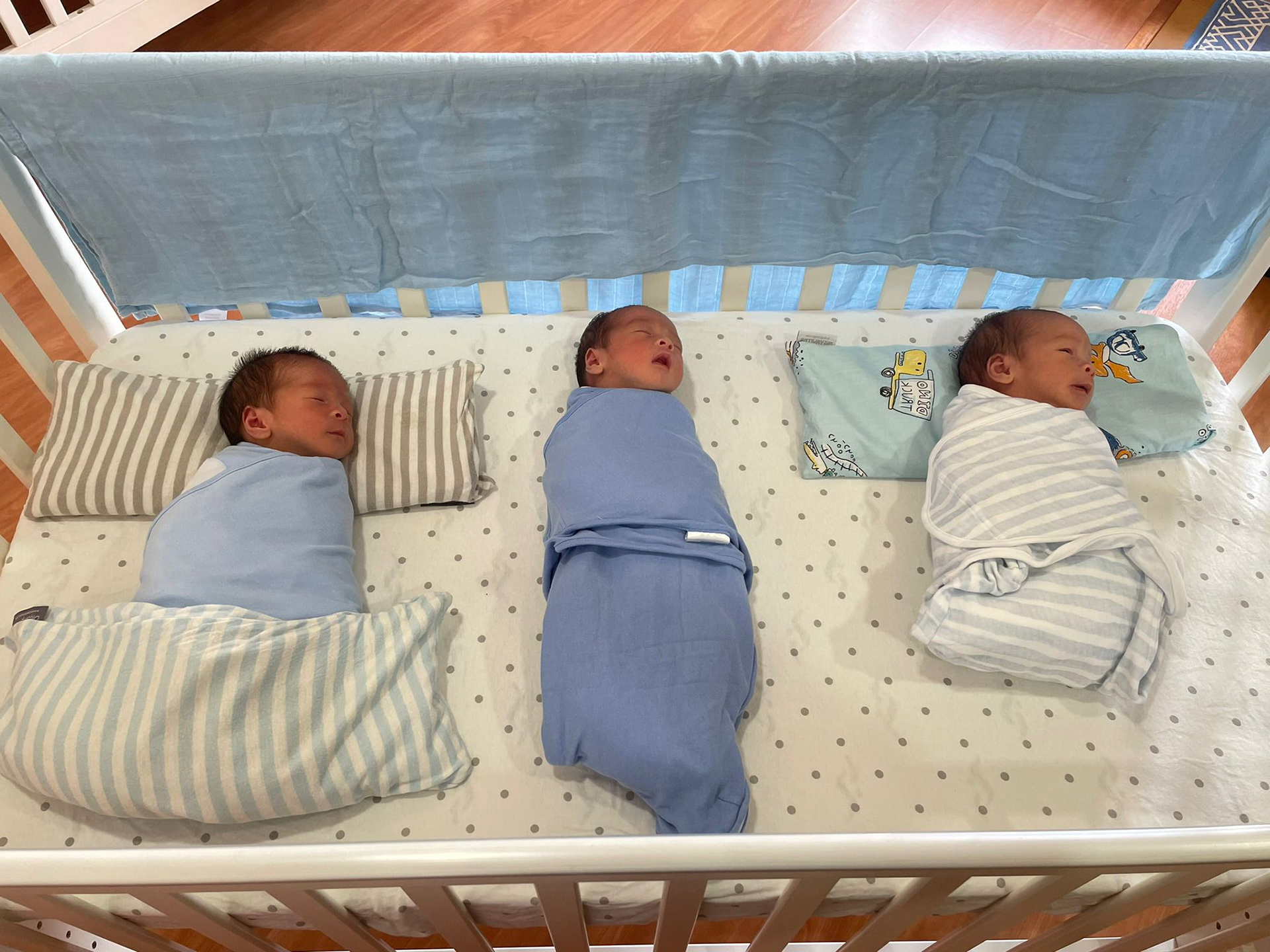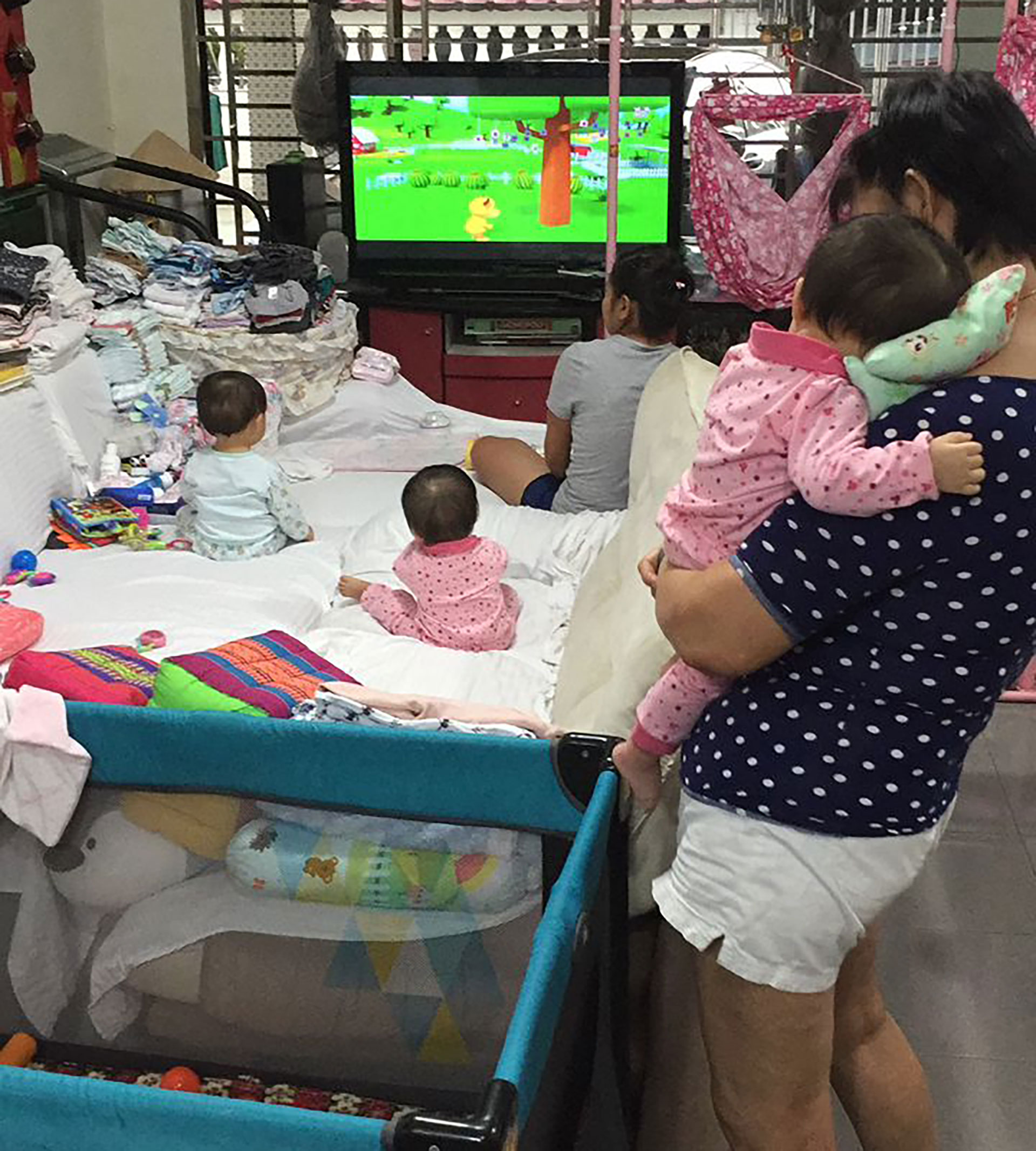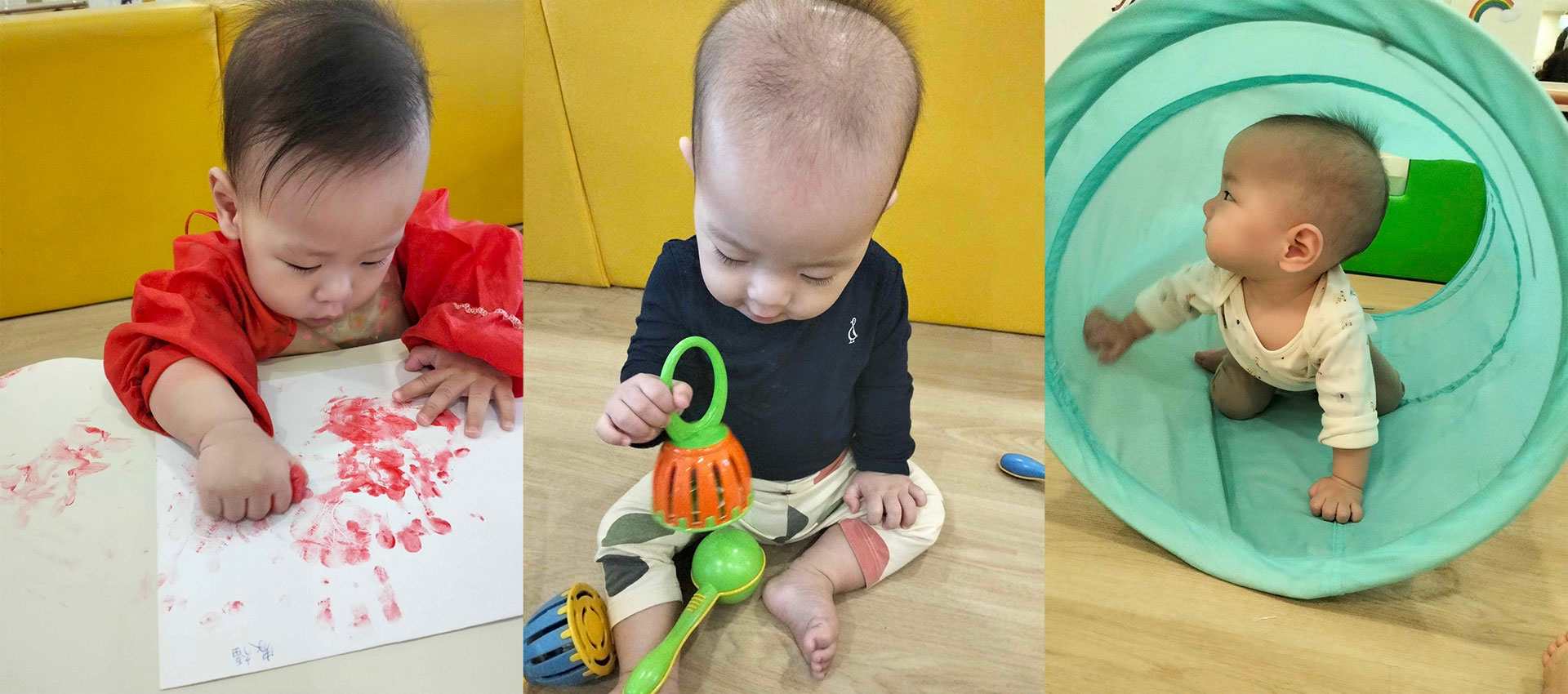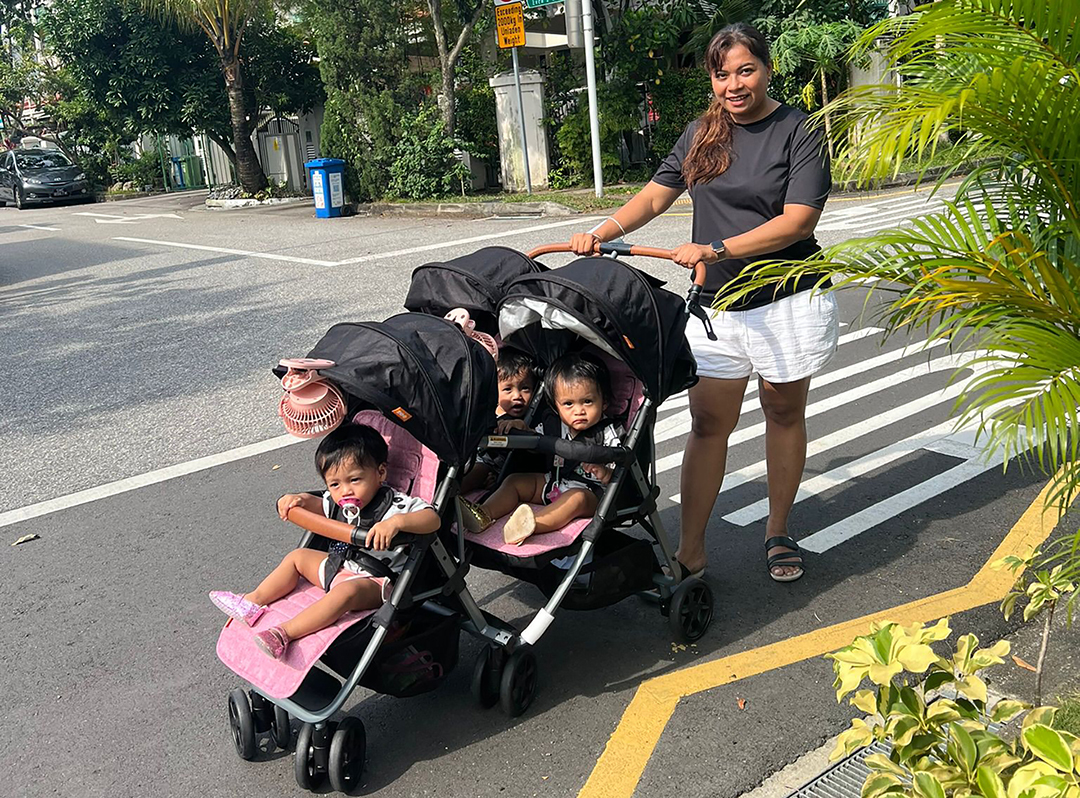The arrival of twins, triplets, or more is a momentous joy, but the reality of managing newborn care for multiple babies is a daunting challenge. The constant demands, coupled with severe sleep deprivation, can lead to unprecedented levels of stress and exhaustion. It's crucial for parents to know that these feelings are valid and that many find themselves burdened to the point of depression or anxiety. If you are struggling, seeking help from a healthcare provider is a sign of strength, not a failure.
For those with multiple young kids, there is no one-size-fits-all solution, but there is immense comfort and value in hearing from those who have navigated the same path. We asked parents of triplets in Singapore to share their caregiving arrangements, and their stories highlight a common theme: it truly takes a village.
The Shift-Based & Family Village Model
For many families with twins or triplets, survival meant working in shifts and calling in reinforcements.
Sharon's family started with a strict parental shift system for their triplets, covering blocks like 6-10 PM, 10-2 AM, and 2-6 AM. They then switched to "one adult, one baby" each. With a retired aunt helping a few days a week and eventually hired helpers for daytime support, they still took over the nights themselves until a helper offered to watch one baby at night when Sharon returned to work.


When the triplet infants were around 2-3 months old, Sharon's family started to use a motorized sarongs or hammocks (commonly known as yao lan 摇篮 ). Their sleeping arrangements were quite fluid, especially during their move from when the babies were 5 to 8 months old. Depending on the babies' crying phases, they would be split between the living room with one parent and the bedroom with the other.
From 8 months to a year, Sharon's mother, who lives nearby, helped by taking one baby each night on a rotating basis based on their fussiness or health status. The other two babies and the helpers would head to Sharon's house every evening and go back to her mum's in the morning. To facilitate this, they had six sarongs in total, three in each of the two homes.
Feeding styles differed; Sharon's mother often fed two at once, while Sharon preferred to feed them individually. The family faced a significant challenge when the babies were just two weeks old and Sharon's husband contracted COVID 🫠. This left Sharon and her mother to manage all three alone, each taking a half-night shift, which was extremely exhausting.
Sharon's common strategy was to feed one baby while another slept on her lap. Her husband, however, often fell asleep with them on his chest, a practice that sparked some debate between the couple. While Sharon sometimes found it endearing, she was often concerned about the safety risks.
---

Sheryl's family created a round-the-clock team with her mother-in-law for their triplets. They took night shifts together in the living room, sleeping whenever possible. During the day, Sheryl would take her "quality sleep" first while her MIL and helper managed the babies, and then they would switch. Her husband helped whenever he was free from work.
---
Jing's family had a precise schedule for their multiples. Her husband slept uninterrupted from 9 PM to 1:30 AM while her dad would come over for the 10:30 PM feed daily. After which, Jing and her husband would both wake up again for the babies’ 1:30 AM feed. They kept a handwritten record of the babies' individual feedings, pee and poop diaper changes, in a little notebook next to the XXL Ggumbi bed that they shared. Jing emphasized the importance of resting whenever the babies slept during the day, even though it meant leaving the home in a messier state than desired.
The Hired Help Game-Changer
For other parents of multiples, bringing in domestic helpers was the key to managing the immense workload.
Rachel's family found that hiring two helpers for their triplets was a game-changer, especially since her husband travels. The helpers now handle the night shift, and they even use WhatsApp chats for each baby to track individual routines. Her advice to parents with twins and triplets is to use all the help you can and not feel bad about asking for it.
---
Saunda also employed two helpers to handle the days and nights with their triplets. Her father-in-law also came daily until the triplets were 18 months old to take them to playgroup.
---
Athira's family found a second helper crucial. Their setup for their young twins/triplets involved both helpers being "all out" in the morning so Grandma could catch up on sleep and be ready for the night shift with Mom.
---

Nurin’s babies all slept with her through the night and she managed to care for them without waking her husband. Her helper took on some of the caregiving duties, and things got easier when the children started attending Infant Care (IFC).
The Hybrid & DIY Approaches
Some families of multiples blended all forms of help, while others took a more hands-on, family-centric approach.
For her triplet boys, Kai Li's family established a hybrid care model involving her parents, a helper, and an Infant Care Centre (IFC). She notes that coordinating multiple caregivers was a significant mental burden. Two key strategies brought relief: first, establishing a 7:00 PM bedtime, which was possible after they observed the babies could go longer between night feeds and gradually weaned them off them. This gives the whole family time for dinner and an earlier rest. Second, enrolling the triplets in an IFC provided a crucial break. While Kai Li's mother was initially opposed, she soon appreciated it after realizing that caring for the triplets at home with just a helper was unsustainable.

Before the infants started at the IFC, the family occasionally hired afternoon babysitters to help after Kai Li returned to work. Looking ahead, the family plans to hire a second helper to relieve the grandparents from their caregiving duties.
---
Nina’s takeaway from the children’s stay in the hospital was that it is acceptable for babies to cry, provided there are no underlying health issues. Therefore, she believes all caregivers should stay relaxed even when the babies cry, as there is no need to pick them up immediately for soothing.

Nina found it could be challenging at first, but she would talk to the babies, explaining that there were three of them and that everyone was trying their best to attend to them. This is what she did when she had to care for them alone for a few hours during their infancy. She believes the babies will understand and adjust.
They also emphasize that babies can sense a caregiver's energy, so everyone needs to remain calm and remind each other to stay composed to get through the phase. Nina notes that sometimes when certain caregivers are too anxious around the babies, their need to react to every single movement, causes her stress and makes her heart race.
Finally, she recognizes that every triplet has different needs, and the key is to learn how to tackle each one individually.
What If You Don't Have Paid Help or Family Nearby?
For parents of twins and triplets facing the journey without the option of hired help or nearby family, the challenge is immense, but not insurmountable. Creativity and building a different kind of village are key for these parents of multiples.
Mobilize Your Friends: Don't be shy about accepting help. Create a schedule for friends who offer support. They can sign up for specific 2-hour "shifts" to hold babies, fold laundry, or load the dishwasher. This gives parents with multiple newborns a guaranteed block of time to sleep or shower.

Meal Prep is Survival: In the months before delivery, cook and freeze meals in large batches. This is a crucial strategy for all expectant parents of twins and triplets who do not have extra help.
Embrace "Shift" Parenting: For the parents, the shift system becomes non-negotiable. One parent can be "on duty" while the other sleeps uninterrupted, ensuring each gets a solid block of sleep. This is essential for survival with infant twins or triplets.
Seek Community Support: Look for local parents of multiples groups. These communities are often incredibly generous and are a lifeline for parents with multiple young kids, offering practical advice and emotional support.
A heartfelt thank you to all the parents of multiples—Rachel, Sharon, Saunda, Kai Li, Athira, Nurin, Sheryl, Jing, and Nina—for so generously sharing their experiences.
To other parents-to-be, while the path is challenging, no one has to walk it alone. We hope these stories help you create a roadmap and are a source of encouragement as you welcome your little ones.
__
Whether you're raising multiples or multiple children, finding a supportive parenting community makes all the difference. Join the conversation and share your experience with us! Follow us on Instagram for more updates :)
Cover Image Credit: Nurin, Singaporean mother of triplets, and mum to seven children.








